You’ll discover that fragrant indoor plants can transform your living space into a natural aromatherapy sanctuary. These botanical air fresheners not only purify the air but also release enchanting scents throughout your home; from sweet jasmine blooms to calming lavender sprigs, each variety offers unique olfactory benefits. Before exploring specific varieties, you’ll need to understand how light exposure and humidity levels affect a plant’s fragrance production.
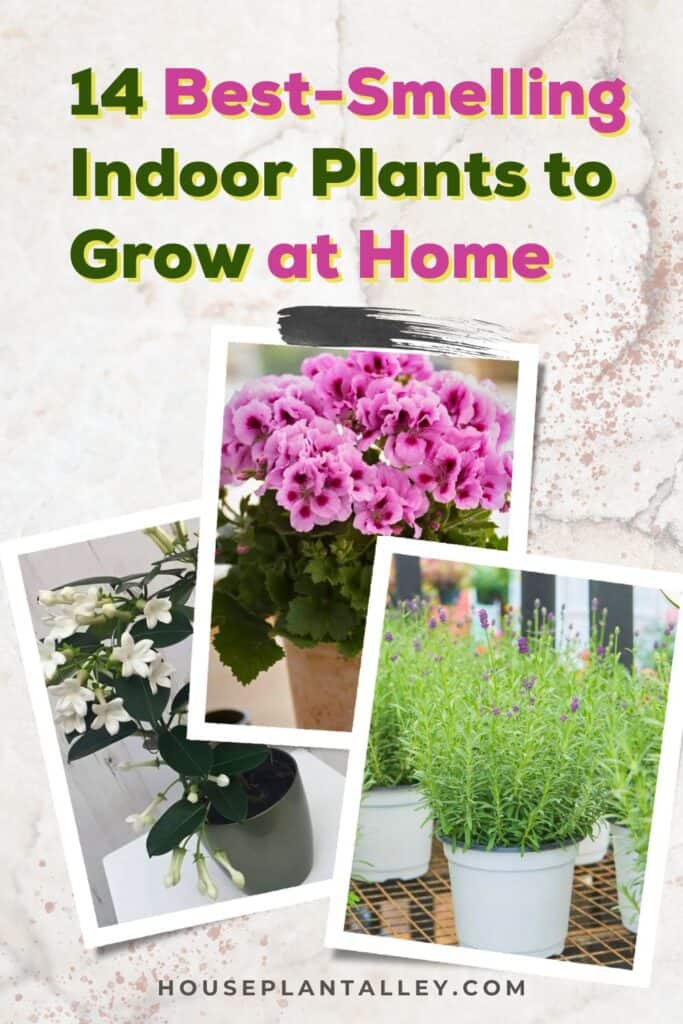
Contents
- 1 Sweet-Scented Arabian Jasmine
- 2 Cuban Oregano Herb Plant
- 3 Fragrant Gardenia Shrub
- 4 Scented English Lavender
- 5 Fragrant Pink Hyacinth Bulb
- 6 Sweet-Blooming Citrus Tree
- 7 Sweet-Smelling Eucalyptus Plant
- 8 Night-Blooming Jasmine Plant
- 9 9. Sweet Bay Laurel Tree
- 10 Sweet Oriental Tea Plant
- 11 Sweet-Blooming Geranium Plant
- 12 Sweet Climbing Stephanotis Vine
- 13 Fragrant Vanilla Orchid Plant
- 14 Sweet Angel’s Trumpet Plant
Sweet-Scented Arabian Jasmine
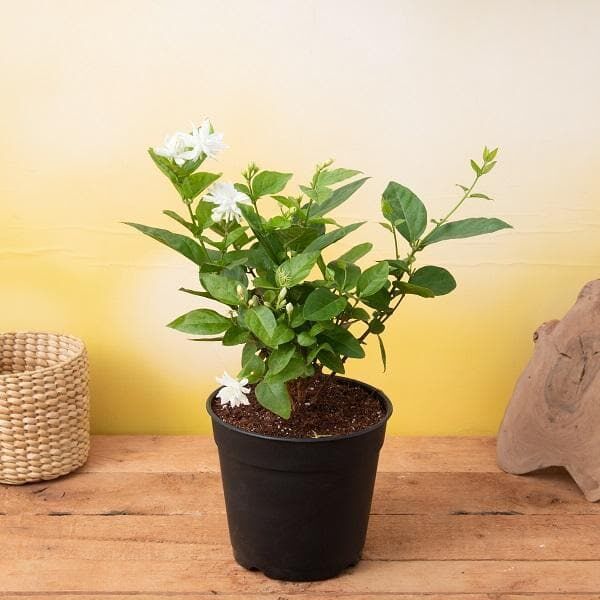
Sweet-Scented Arabian Jasmine (Jasminum sambac) is a tropical evergreen vine known for its intensely fragrant white flowers that bloom year-round. This popular houseplant produces small, waxy blossoms that release their strongest perfume during evening hours, making it perfect for bedrooms or living spaces where you can enjoy its sweet aroma. The plant’s glossy green foliage forms a compact bush when grown indoors, typically reaching heights of 4-6 feet, though it can be pruned to maintain a smaller size.
- Light: Bright, indirect sunlight; morning sun is beneficial but protect from harsh afternoon rays
- Water: Keep soil consistently moist but not waterlogged; water when top inch of soil feels dry
- Soil: Well-draining, rich potting mix with added organic matter
- Temperature: 65-85°F (18-29°C); protect from cold drafts
- Humidity: High humidity (50-60%); benefits from regular misting
- Fertilizer: Feed every 2-3 weeks during growing season with balanced liquid fertilizer
- Soil pH: 6.0-7.0
- Container: Pot with adequate drainage holes
Cuban Oregano Herb Plant
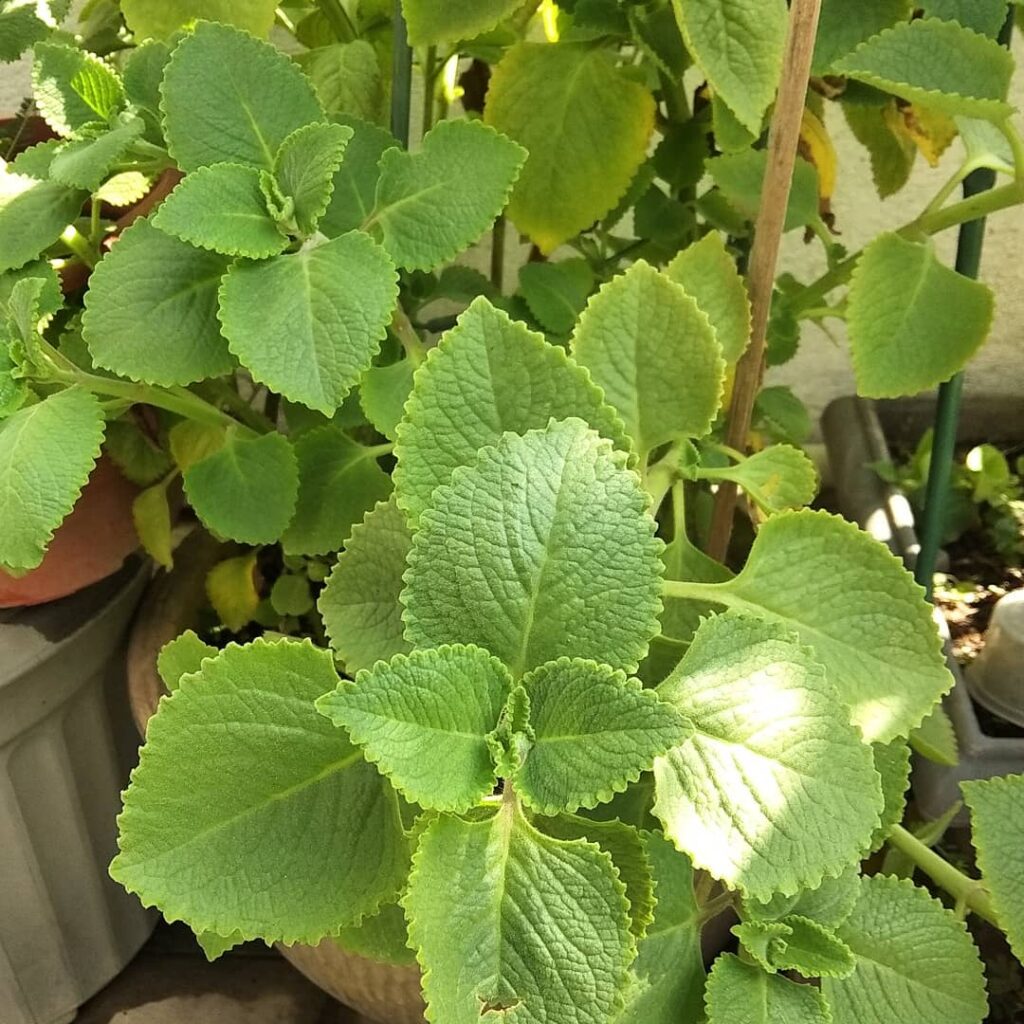
Cuban oregano (Plectranthus amboinicus) is a succulent herb known for its thick, fuzzy leaves that emit a strong, pleasant aroma reminiscent of oregano with hints of thyme and mint. Despite its name, it’s not true oregano but rather a member of the mint family. This aromatic plant grows as a compact bush with fleshy stems and can reach heights of 12-18 inches, making it an excellent choice for both indoor gardens and culinary uses.
- Light: Bright, indirect sunlight; can tolerate some direct morning sun
- Water: Allow soil to dry between waterings; water deeply but infrequently
- Soil: Well-draining potting mix with added perlite or sand
- Temperature: Prefers warm conditions between 65-80°F (18-27°C)
- Humidity: Tolerates average household humidity
- Fertilizer: Light feeding with balanced fertilizer during growing season
- Container: Pot with drainage holes to prevent root rot
- Pruning: Regular pinching to maintain bushiness and prevent legginess
Fragrant Gardenia Shrub
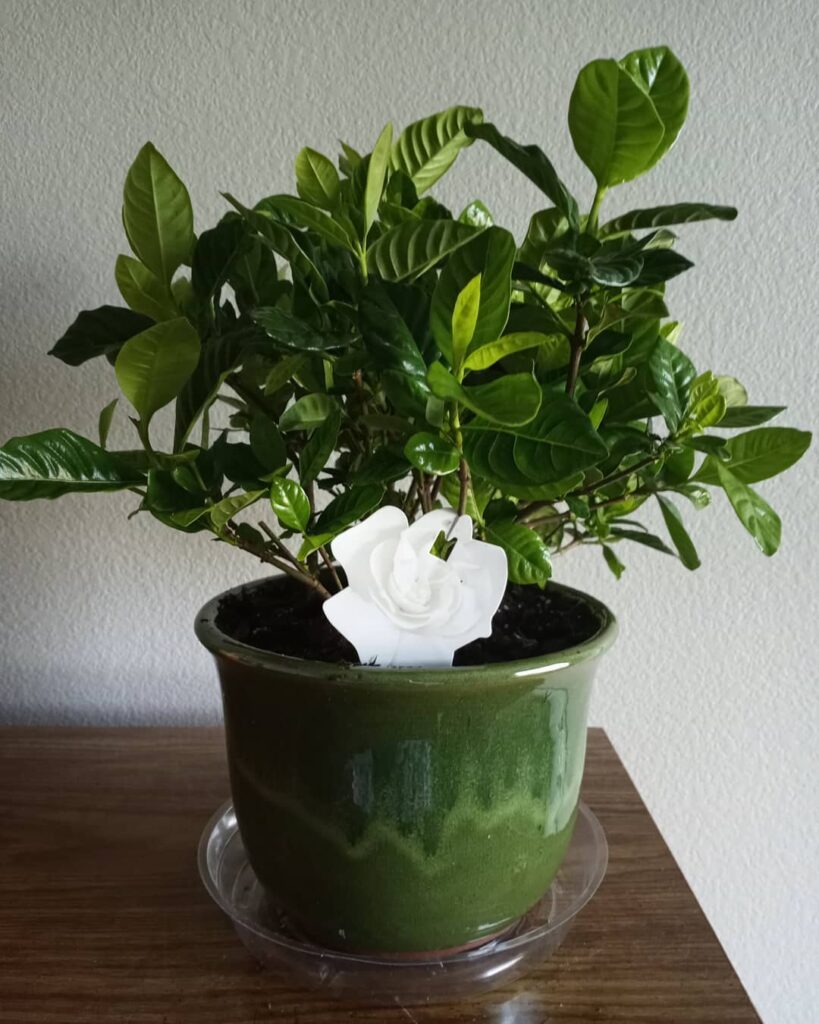
Gardenia is a beloved indoor shrub prized for its intoxicating sweet fragrance and glossy dark green foliage. The plant produces stunning white, waxy flowers that emit an intense perfume reminiscent of jasmine and vanilla. While gardenias can be somewhat challenging to grow indoors, their beauty and scent make them worth the extra care and attention they require.
- Light: Bright, indirect sunlight; morning sun is ideal; protect from harsh afternoon rays
- Water: Keep soil consistently moist but not waterlogged; water when top inch of soil feels dry
- Humidity: High humidity (50-60%); use humidity tray or mist regularly
- Temperature: 65-70°F during day, slightly cooler at night; avoid cold drafts
- Soil: Well-draining, acidic soil with pH between 5.0-6.0
- Fertilizer: Feed monthly during growing season with acid-loving plant fertilizer
- Pot: Container with good drainage holes
- Additional: Requires good air circulation to prevent fungal issues
Scented English Lavender
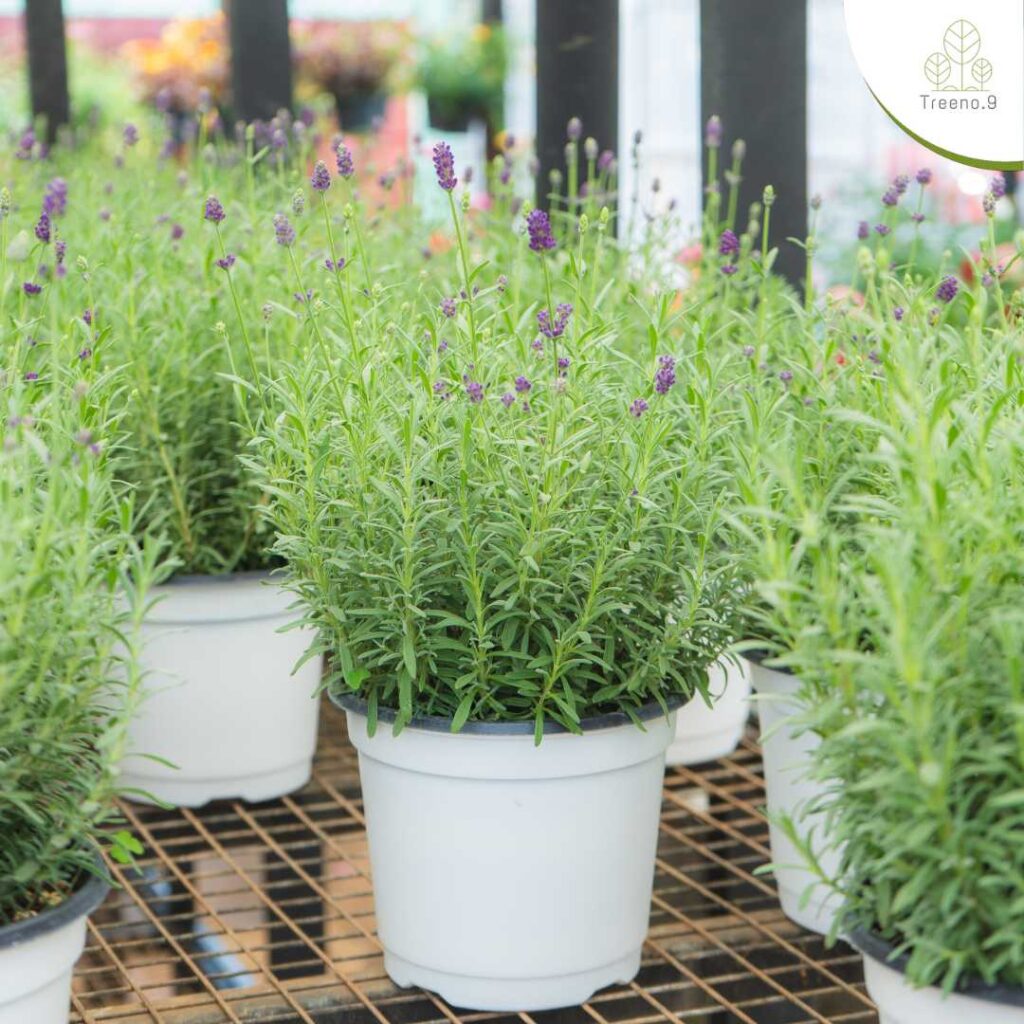
Scented English Lavender (Lavandula angustifolia) is a fragrant, compact herb that can thrive indoors when given proper care. This aromatic plant produces distinctive purple-blue flower spikes and silvery-green foliage, releasing its signature calming scent when brushed against or gently touched. While traditionally grown outdoors, indoor lavender can perfume rooms with its sweet, floral fragrance and serve as both an ornamental and therapeutic plant, known for its stress-reducing properties and use in aromatherapy.
- Light: Requires 6-8 hours of direct sunlight daily; place near south-facing windows
- Water: Allow soil to dry between waterings; water deeply but infrequently
- Soil: Well-draining, alkaline soil with pH 6.7-7.3
- Temperature: Prefers 65-70°F (18-21°C)
- Humidity: Tolerates low humidity; avoid misting
- Container: Terra cotta pot with drainage holes
- Fertilizer: Light feeding with balanced fertilizer during growing season
- Pruning: Trim spent blooms and shape regularly to maintain bushiness
Fragrant Pink Hyacinth Bulb

The Fragrant Pink Hyacinth bulb produces sweet-scented, star-shaped flowers that cluster densely on tall stalks. These spring-blooming bulbs display soft pink to deep rose-colored blooms and fill indoor spaces with an intense, floral perfume that’s both sweet and spicy. When forced to bloom indoors, pink hyacinths can provide a welcome burst of color and fragrance during winter months, lasting approximately 2-3 weeks in bloom.
- Light: Bright, indirect sunlight; avoid direct afternoon sun
- Water: Keep soil consistently moist but not waterlogged; reduce watering after blooming
- Soil: Well-draining potting mix rich in organic matter
- Temperature: Cool conditions 60-65°F (15-18°C) during blooming
- Humidity: Moderate humidity levels
- Planting depth: Place bulb with tip slightly exposed above soil
- Container: Use pots with drainage holes
- Special needs: Requires 12-14 weeks of cold treatment (40-45°F) before forcing indoors
Sweet-Blooming Citrus Tree
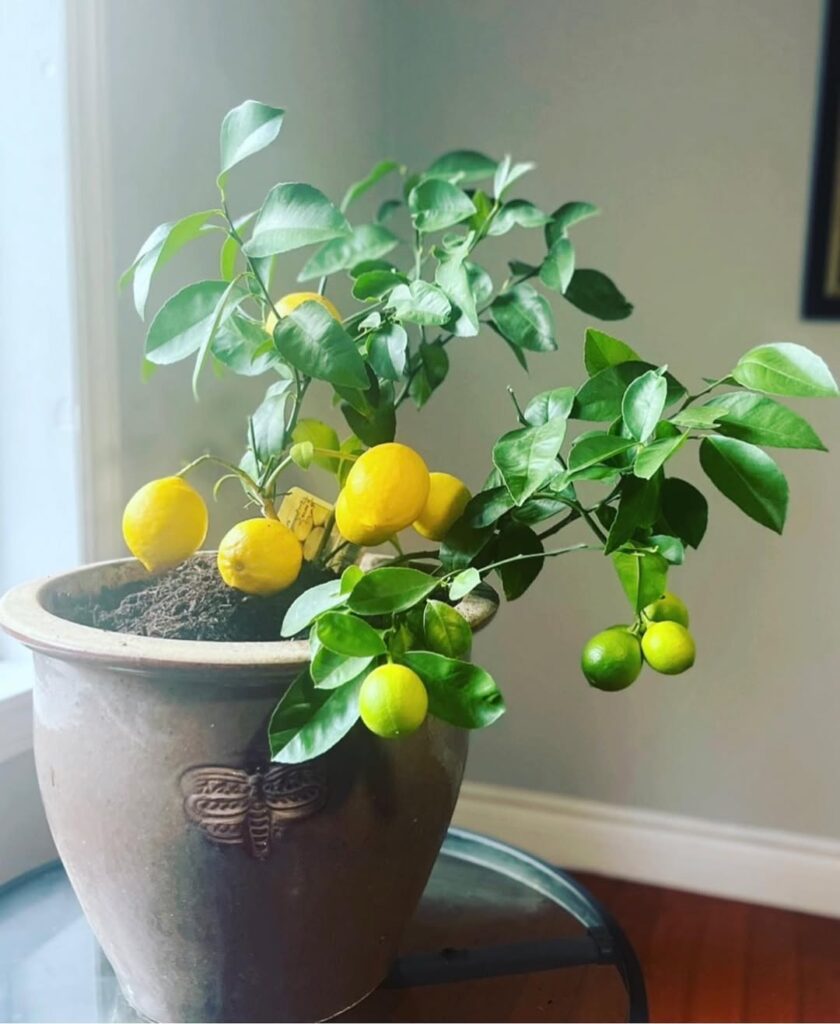
Sweet-blooming citrus trees make enchanting indoor plants, delighting the senses with their fragrant white blossoms and potential to bear fruit. Whether it’s a Meyer lemon, kaffir lime, or calamondin orange, these compact trees produce intoxicatingly sweet flowers that fill a room with their perfume. The blooms typically appear in spring, though some varieties may flower multiple times throughout the year, creating a tropical ambiance in any indoor space.
- Light: Bright, direct sunlight for 6-8 hours daily; south or southwest-facing windows are ideal
- Water: Keep soil consistently moist but not waterlogged; water when top 1-2 inches of soil feels dry
- Soil: Well-draining, slightly acidic citrus soil mix
- Humidity: 50% or higher; use humidity tray or mist regularly
- Temperature: 65-70°F during day, no lower than 55°F at night
- Fertilizer: Apply citrus-specific fertilizer every 6-8 weeks during growing season
- Container: Large pot with adequate drainage holes
- Air circulation: Good airflow while avoiding cold drafts
Sweet-Smelling Eucalyptus Plant
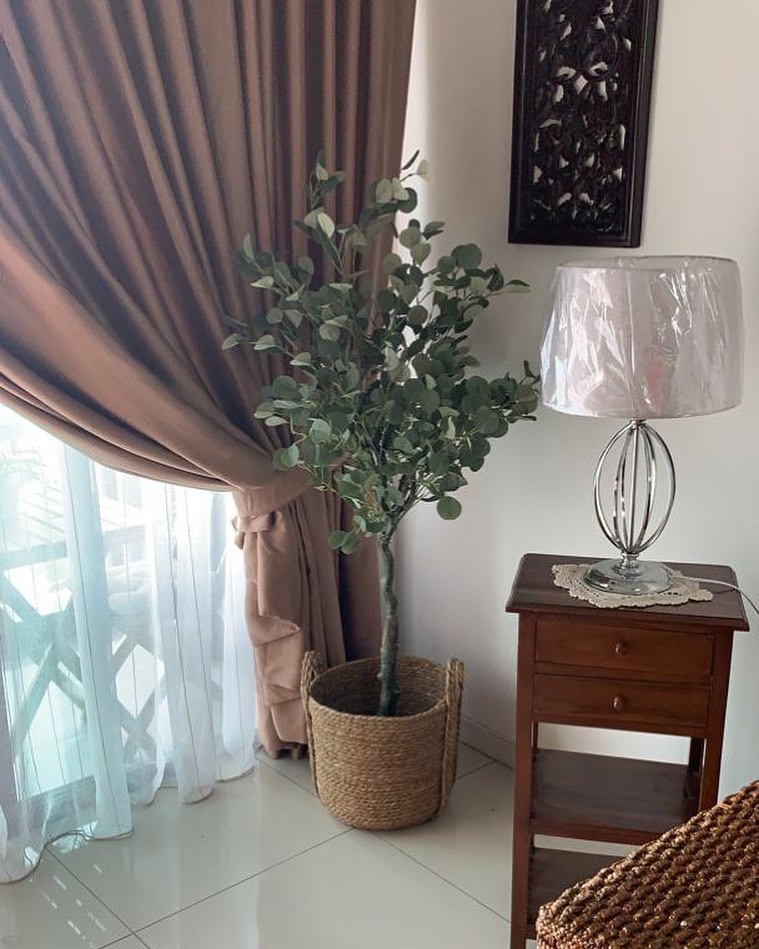
The sweet-smelling eucalyptus plant is a fragrant indoor specimen known for its distinctive menthol-like aroma and silvery-blue foliage. While traditionally an outdoor tree in its native Australia, certain eucalyptus varieties can be successfully grown indoors as container plants. The leaves release their invigorating scent when gently rubbed or crushed, making it an excellent choice for bringing natural aromatherapy into living spaces. Regular pruning helps maintain a manageable size and encourages bushier growth, while also providing leaves that can be dried for arrangements or sachets.
- Light: Bright, direct sunlight for at least 6 hours daily; place near south-facing windows
- Water: Moderate watering; allow top inch of soil to dry between waterings
- Soil: Well-draining, slightly acidic potting mix
- Temperature: 65-75°F (18-24°C)
- Humidity: Average household humidity; tolerates dry air well
- Fertilizer: Feed monthly during growing season with balanced fertilizer
- Container: Large pot with adequate drainage holes
- Air circulation: Good airflow to prevent fungal issues
Night-Blooming Jasmine Plant
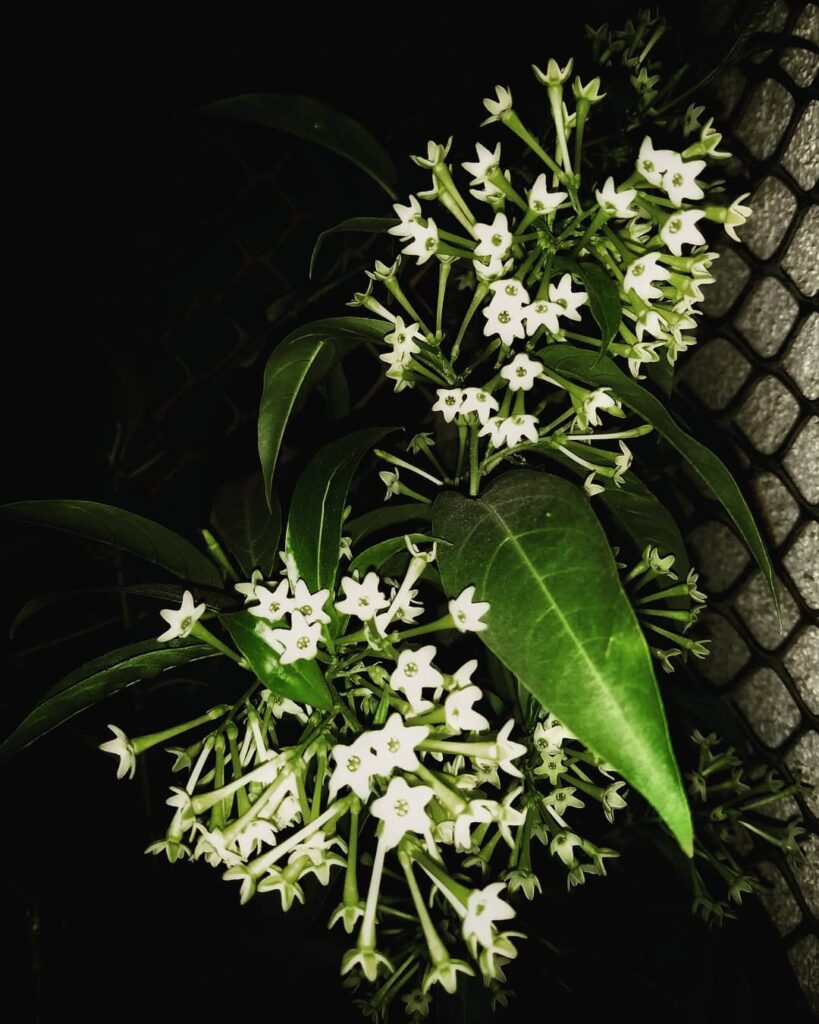
Night-blooming jasmine (Cestrum nocturnum) is a tropical evergreen shrub known for its intensely fragrant white-green flowers that release their sweet perfume after sunset. Though not a true jasmine, this plant earned its common name from its similarly intoxicating scent. The tubular flowers bloom in clusters throughout warm months, making it a popular choice for indoor gardeners seeking to add evening fragrance to their homes. While the blooms are relatively small and subtle in appearance, their powerful scent can fill an entire room.
- Light: Bright, indirect sunlight; can tolerate partial shade but needs some direct sun for ideal blooming
- Water: Keep soil consistently moist but not waterlogged; reduce watering in winter
- Soil: Well-draining, rich potting mix with added organic matter
- Temperature: 60-75°F (15-24°C); protect from cold drafts
- Humidity: Moderate to high; benefits from regular misting
- Fertilizer: Feed monthly during growing season with balanced fertilizer
- Container: Large pot with drainage holes to accommodate growth
- Pruning: Regular trimming to maintain shape and encourage bushier growth
9. Sweet Bay Laurel Tree
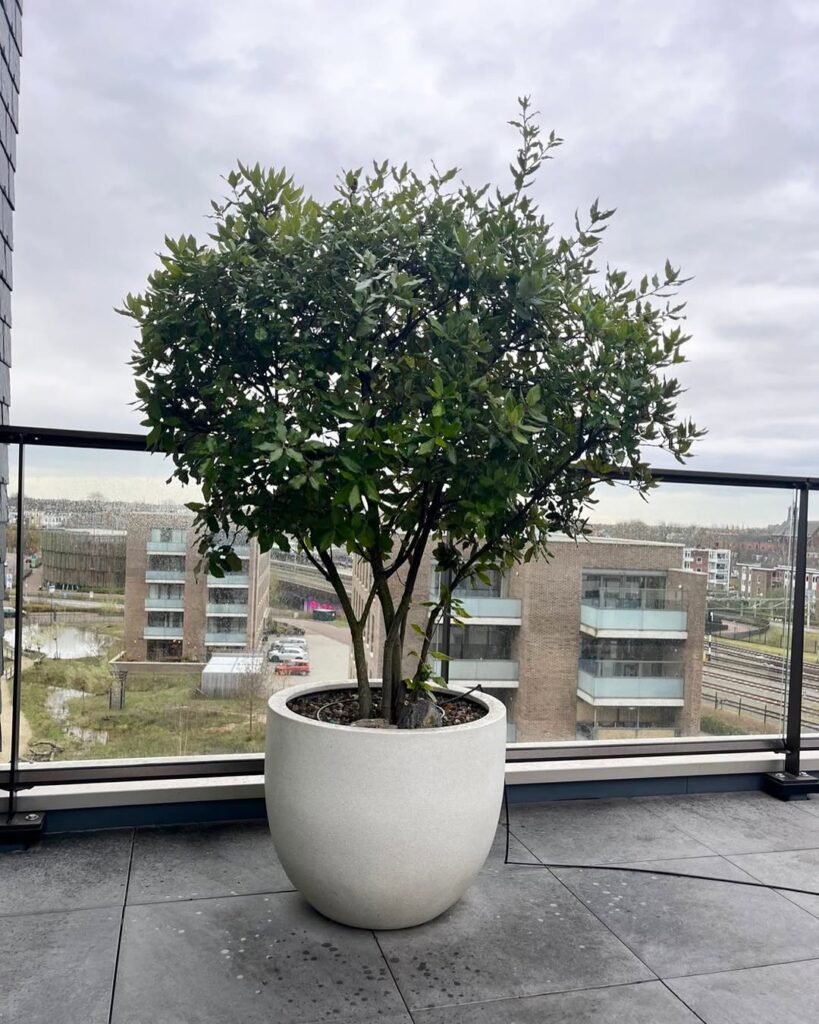
Sweet Bay Laurel is an aromatic evergreen tree that can be grown as a container plant indoors, reaching heights of 4-6 feet when kept as a houseplant. Its glossy, dark green leaves emit a sweet, floral fragrance and are commonly used as a culinary herb in soups, stews, and other dishes. The plant produces small yellow flowers in spring, followed by purple-black berries, though flowering is less common indoors. With proper care, this Mediterranean native can serve as both an attractive and fragrant addition to indoor spaces while providing fresh bay leaves for cooking.
- Light: Bright indirect sunlight; can tolerate some direct morning sun but protect from harsh afternoon rays
- Water: Moderate watering; allow top inch of soil to dry between waterings; avoid waterlogged soil
- Soil: Well-draining potting mix with added perlite or sand
- Humidity: Moderate; tolerates average indoor humidity levels
- Temperature: 65-75°F (18-24°C); can handle brief drops to 45°F (7°C)
- Fertilizer: Feed with balanced liquid fertilizer every 2-3 months during growing season
- Container: Use pot with drainage holes; repot every 2-3 years
- Air circulation: Good airflow to prevent pest issues
Sweet Oriental Tea Plant
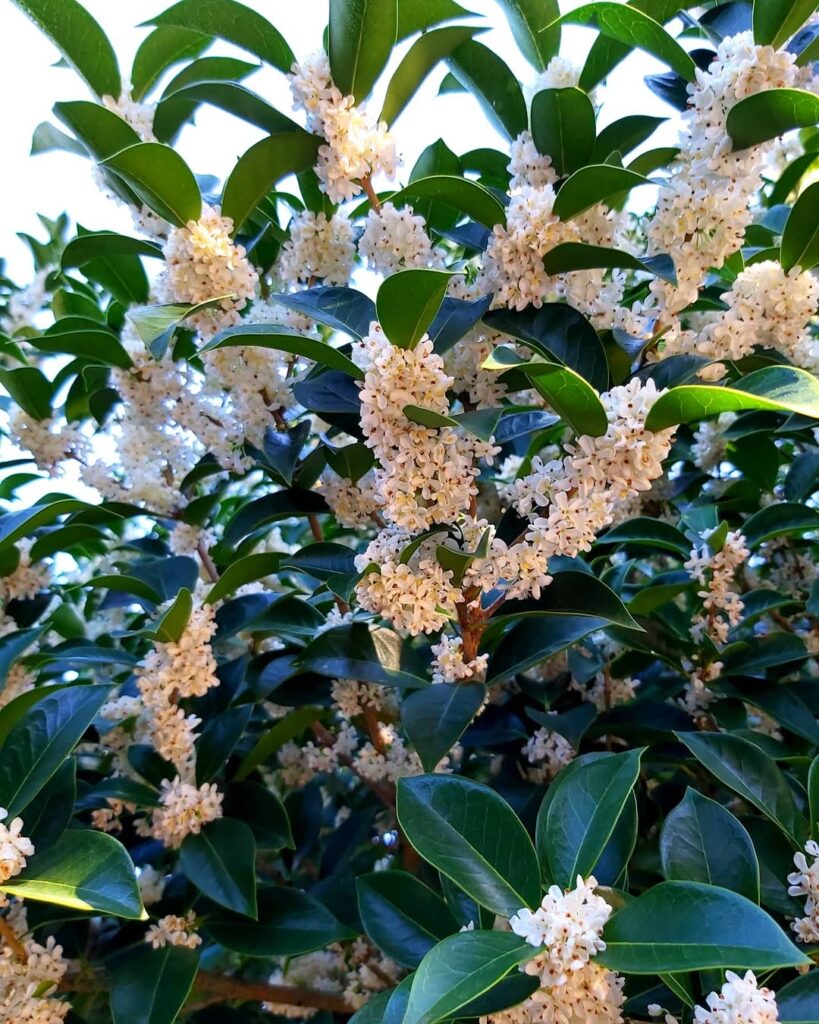
The Sweet Oriental Tea Plant (Osmanthus fragrans) is a highly fragrant evergreen shrub prized for its tiny but powerfully scented white flowers. Originally from East Asia, this plant produces a delightful apricot-like fragrance that can fill an entire room, making it a popular choice for indoor gardening. The glossy dark green leaves provide an attractive backdrop to the clusters of small blooms, which typically appear in autumn and spring, though some varieties may flower at other times throughout the year.
- Light: Bright indirect light; can tolerate some direct morning sun but avoid harsh afternoon sunlight
- Water: Keep soil consistently moist but not waterlogged; water when top inch of soil feels dry
- Soil: Well-draining, slightly acidic potting mix rich in organic matter
- Humidity: Moderate to high humidity (40-60%)
- Temperature: 65-75°F (18-24°C); protect from cold drafts
- Fertilizer: Feed with balanced fertilizer every 4-6 weeks during growing season
- Pot: Choose container with adequate drainage holes
- Pruning: Light pruning after flowering to maintain shape and size
Sweet-Blooming Geranium Plant
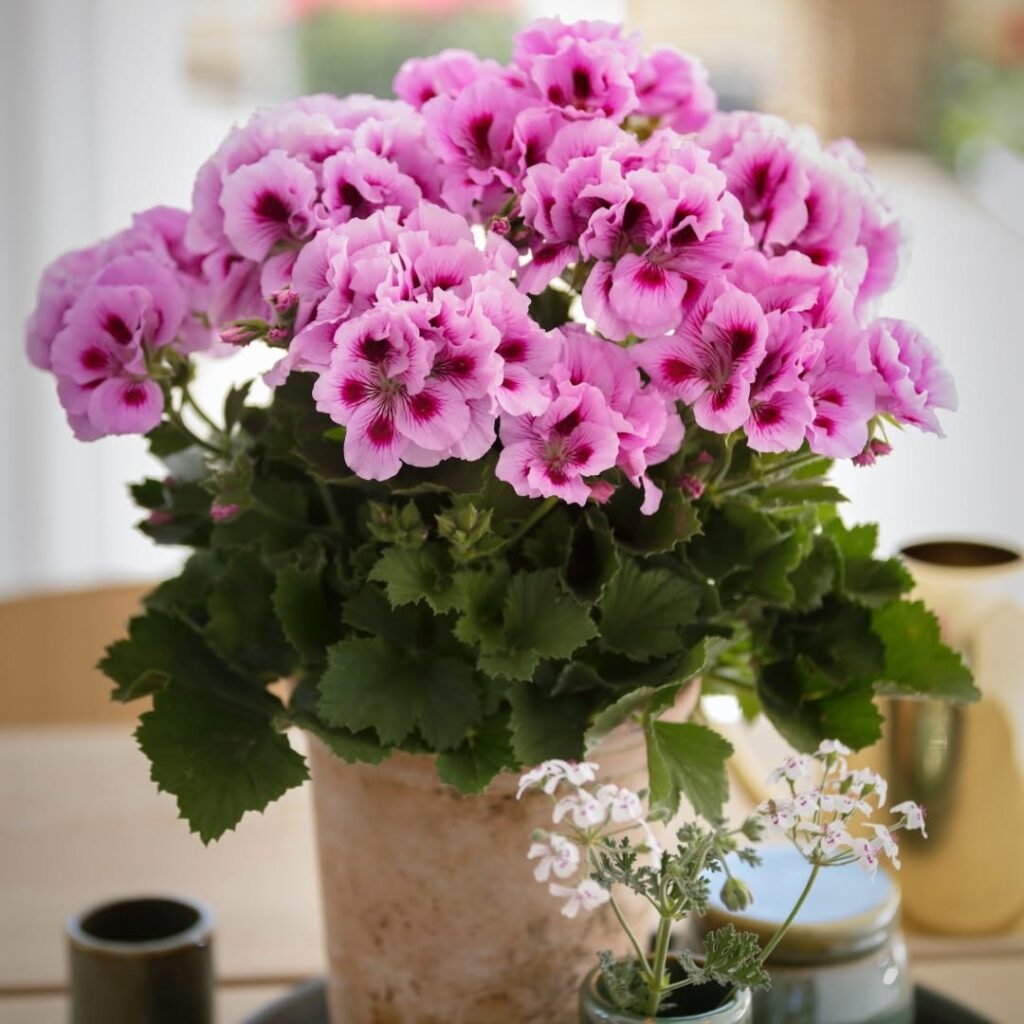
Sweet-blooming geraniums are beloved houseplants that produce clusters of delicate flowers and aromatic foliage. Their leaves release a delightful fragrance when brushed or touched, with scents ranging from rose and lemon to chocolate and pine, depending on the variety. These compact plants typically grow 12-24 inches tall, making them perfect for windowsills and indoor gardens, while their continuous blooming habit provides both visual appeal and a pleasant natural perfume throughout the growing season.
- Light: Bright, direct sunlight for 4-6 hours daily; some afternoon shade in hot climates
- Water: Allow soil to dry slightly between waterings; water deeply when top inch feels dry
- Soil: Well-draining potting mix with added perlite or sand
- Temperature: 65-75°F (18-24°C); protect from cold drafts
- Humidity: Average household humidity; tolerates dry air well
- Fertilizer: Feed with balanced fertilizer every 4-6 weeks during growing season
- Pruning: Remove spent blooms and yellowing leaves to encourage new growth
- Container: Use pots with drainage holes; repot every 2-3 years
Sweet Climbing Stephanotis Vine
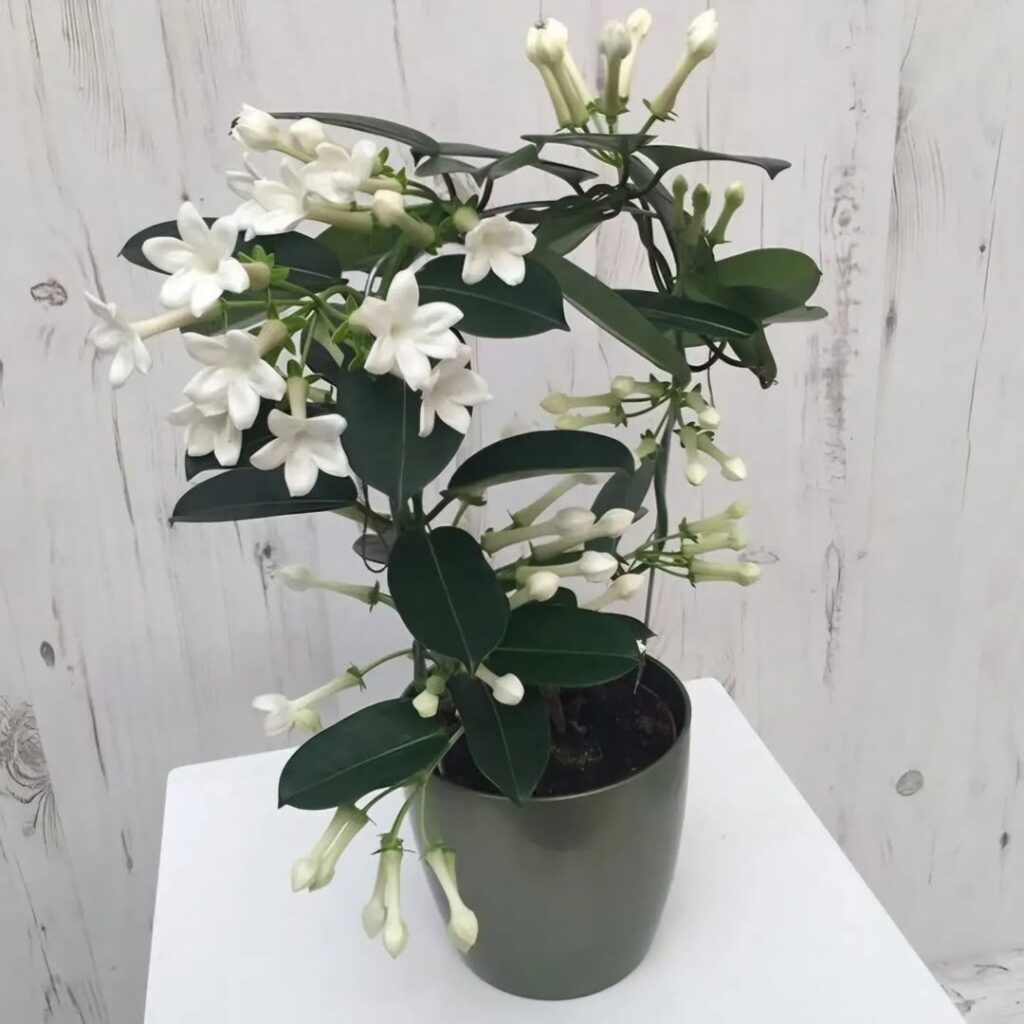
Stephanotis, also known as Madagascar Jasmine or Bridal Wreath, is a fragrant climbing vine that produces clusters of pure white, waxy, star-shaped flowers. This elegant plant emits a sweet, intoxicating jasmine-like fragrance that can fill an entire room, making it a popular choice for indoor growing. Its glossy, dark green leaves provide an attractive backdrop for the blooms, which typically appear from late spring through fall and are often used in wedding bouquets due to their pristine appearance and delightful scent.
- Light: Bright, indirect sunlight; protect from harsh afternoon sun
- Water: Keep soil consistently moist but not waterlogged; reduce watering in winter
- Soil: Well-draining, rich potting mix with high organic content
- Humidity: High humidity levels (50-60%); regular misting beneficial
- Temperature: Warm conditions between 65-80°F (18-27°C)
- Support: Requires a trellis or other climbing structure
- Fertilizer: Feed monthly during growing season with balanced liquid fertilizer
- Pruning: Trim after flowering to maintain shape and encourage bushiness
Fragrant Vanilla Orchid Plant
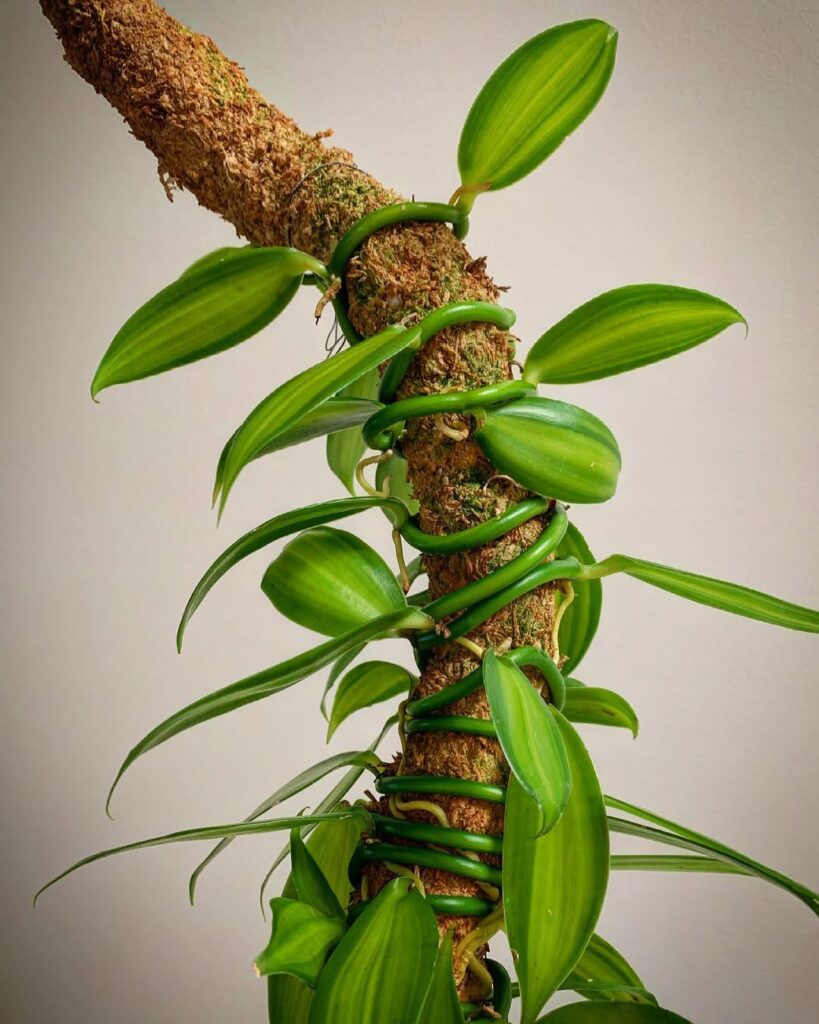
The Vanilla Orchid (Vanilla planifolia) is a tropical climbing vine that produces the vanilla beans used in cooking and fragrances. This exotic orchid species can grow up to 30 feet long and features thick, succulent stems with glossy green leaves. When in bloom, it produces delicate, pale yellow-green flowers that emit a pleasant vanilla fragrance. While getting the plant to produce vanilla beans at home is challenging, the foliage and flowers still make it a desirable indoor plant for orchid enthusiasts.
- Light: Bright, indirect light; morning sun is beneficial but protect from harsh afternoon sun
- Water: Keep soil consistently moist but not waterlogged; reduce watering in winter
- Humidity: High humidity (60-70%); regular misting or humidifier recommended
- Temperature: Warm environment between 60-70°F (15-21°C); protect from drafts
- Soil: Well-draining orchid mix with bark, charcoal, and sphagnum moss
- Support: Requires a trellis, pole, or other structure for climbing
- Fertilizer: Feed monthly during growing season with balanced orchid fertilizer
- Pot: Use containers with plenty of drainage holes; repot every 2-3 years
Sweet Angel’s Trumpet Plant
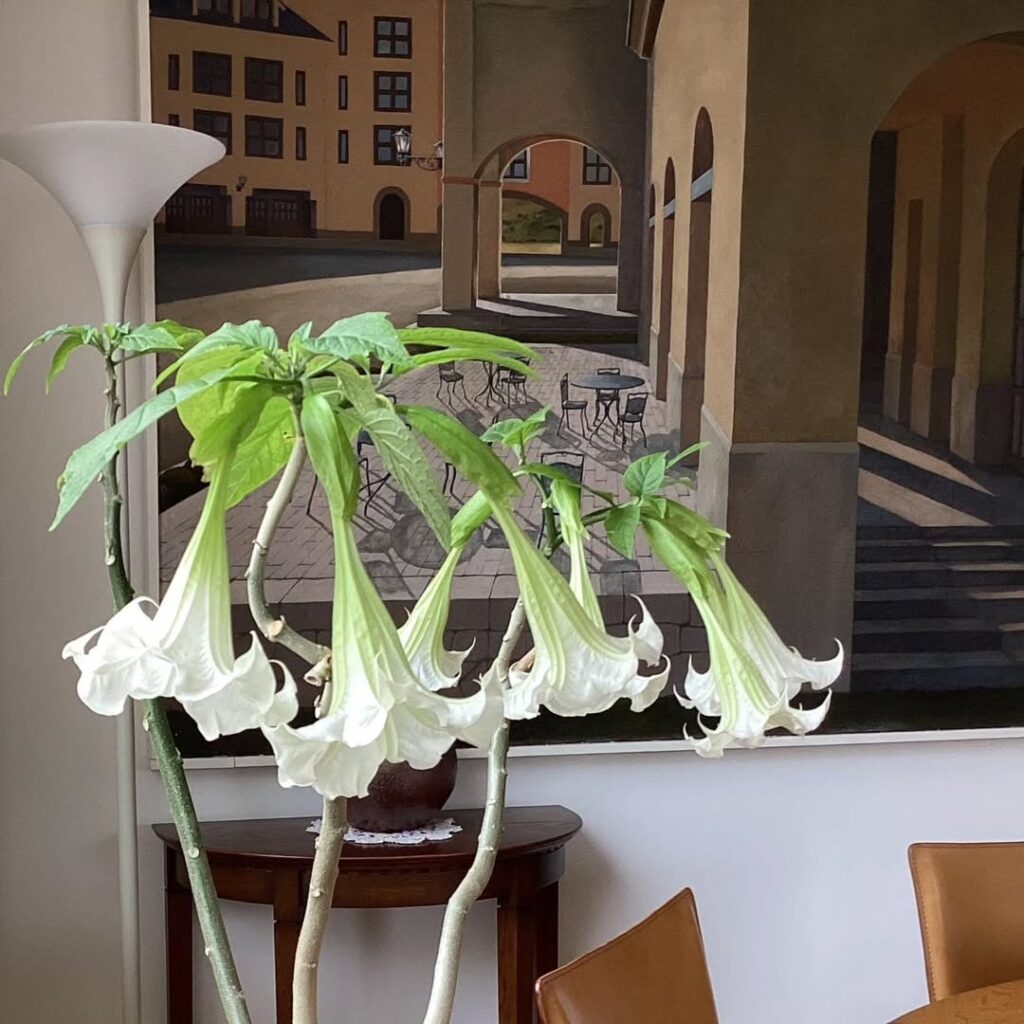
The Sweet Angel’s Trumpet (Brugmansia) is a striking flowering plant known for its large, pendulous, trumpet-shaped blooms that release an intoxicating sweet fragrance, especially in the evening hours. These dramatic flowers can grow up to 12 inches long and come in shades of white, pink, yellow, and orange. While beautiful, all parts of this plant are highly toxic and should be kept away from children and pets.
- Light: Bright, indirect sunlight; can tolerate partial shade but needs at least 6 hours of light daily
- Water: Keep soil consistently moist but not waterlogged; water deeply when top inch of soil feels dry
- Soil: Rich, well-draining potting mix with high organic content
- Temperature: 60-75°F (15-24°C); not frost tolerant
- Humidity: Moderate to high humidity; benefits from regular misting
- Fertilizer: Feed every 2-3 weeks during growing season with balanced liquid fertilizer
- Container: Large pot with drainage holes to accommodate extensive root system
